45 carbohydrates on food labels
LABEL READING: CARBOHYDRATES AND SUGARS - Renaissance Nutrition Center ... If there were sugar names in the ingredient list, then be very suspicious of what is on the label. The label may list as many as six items: Total Carbohydrate Dietary Fiber Soluble fiber Sugars Sugar alcohols Other Carbohydrates Some manufacturers voluntarily include the subcategories of sugar alcohol and "other carbohydrates." Others do not. Food Labels and Counting Carbs - dummies Total Carbohydrate is listed in grams. Because %Daily Value is written in bold and off to the right side of the label, and lined up neatly with the actual amount, it is easy to allow your eye to zero in on the %Daily Value rather than the actual amount in grams.
Macronutrients | National Agricultural Library - USDA Macronutrients. Macronutrients are types of foods that are needed in large quantities in the diet. These include carbohydrates, proteins, fats, cholesterol, fiber, and water. Find information about most macronutrients below. Visit the Sweeteners page for resources on sugar.

Carbohydrates on food labels
Carbohydrate Counting Using the Food Label | RD2RD Meal-planning and label reading are cornerstones of diabetes management. It is important for your clients to know how to read the food label to count carbohydrates. The Carbohydrate Counting Using the Food Label is part of the Carbohydrate Counting Toolkit along with other handouts and worksheets. Free Resources: Sleep Challenge Worksheet Carb Counting #2: Nutrition Labels - tandemdiabetes.com For counting carbohydrates, the two most important and useful items on the label are: Serving Size Total Carbohydrate "Total Carbohydrate" should be the main focus - NOT just the Sugars. Total Carbohydrate reflects all sugars, including sugar, starch, fiber, and sugar alcohol. How to Use the Nutrition Facts Label — Diet Doctor 3. Calculate net carbs per serving. Third, check the grams of dietary fiber per serving (circled in green, above). Subtract the fiber (green) from the total carbohydrates (blue) to get the net carbs. This chocolate has 9 grams of net carbs per serving (14g carbs - 5g fiber = 9g net carbs).
Carbohydrates on food labels. How to Understand and Use the Nutrition Facts Label | FDA - U.S. Food ... Dietary fiber, vitamin D, calcium, iron ad potassium are nutrients on the label that Americans generally do not get the recommended amount of. They are identified as nutrients to get more of.... Reading labels | Diabetes UK Key points Always look at the 'total carbohydrate' on the label when carb counting. This will make sure you are counting both the complex (starchy) and simple (sugary) carbs in your food. Both will raise your blood glucose (blood sugar) levels, and need to be matched with insulin. Understanding Food Labels - The Nutrition Source Under the Food Allergen Labeling and Consumer Protection Act of 2004, eight major food allergens—milk, fish, tree nuts, peanuts, shellfish, wheat, eggs, and soybeans—are required to be listed in a "contains" statement near the Ingredients list if present in a food. An example would be "contains wheat, milk, and soy." Reading Food Labels | GI Foundation In Australia and New Zealand and other parts of the world, the term carbohydrate as listed on the nutrition information panel (NIP) only includes the starches and sugars in the food. It does not include fibre because fibre is not broken down during digestion. Therefore "total carbohydrate" includes the starches, sugars and fibre in the food.
kidshealth.org › en › kidsFiguring Out Food Labels (for Kids) - Nemours KidsHealth A food with 5% or less of a nutrient is low in that nutrient. A food with 10%–19% of a nutrient is a good source of that nutrient. A food with 20% or more of a nutrient is high in that nutrient. The information on food labels is based on an average adult diet of 2,000 calories per day. Sugars on food labels - Sugar Nutrition Resource Centre Sugars on food labels Carbohydrates are broadly classified into monosaccharides, disaccharides and polysaccharides FIND OUT MORE Monosaccharides and disaccharides are otherwise known as 'sugars' FIND OUT MORE Polys or sugar alcohols are naturally found in some fruits and used commercially in products such as chewing gum FIND OUT MORE What does total carbohydrates on food labels include? 10 Things to Look for on Food Labels #1 The Number Stickers on Fruits and Vegetables. You might not think of the numbered stickers on fruits and vegetables as being a food label, but you can actually get #2 The Serving Size. #3 Calories. #4 Fat. #6 Fiber. #8 % DV (Daily Value) Another thing to look for on a label is the % DV (Daily Value). How to Calculate the Carbohydrates From the Food Label if Fiber ... - Chron Dietary fiber is a type of carbohydrate that isn't digested by your body. As a result, it doesn't affect your blood sugar levels. So a food label that shows 10 grams of carbohydrates per serving with 5 grams of dietary fiber would only contain five net carbs. However, many foods that you'll find in the grocery store contain a minimal amount of ...
› nutritionsourceCarbohydrates and Blood Sugar | The Nutrition Source ... Dividing carbohydrates into simple and complex, however, does not account for the effect of carbohydrates on blood sugar and chronic diseases. To explain how different kinds of carbohydrate-rich foods directly affect blood sugar, the glycemic index was developed and is considered a better way of categorizing carbohydrates, especially starchy foods. Food Labels: Carbohydrates | Home & Garden Information Center According to nutrition experts, carbohydrates should provide 45-65% of your total daily calories. That means carbohydrates should supply 900 calories or more in a 2,000-calorie-a-day diet. Facts on Food Labels Food labels contain clues to a food's carbohydrate content, including the amount per serving. Food Labels | CDC - Centers for Disease Control and Prevention If you eat the whole thing, you are eating 8 times the amount of calories, carbs, fat, etc., shown on the label. Total Carbohydrate shows you types of carbs in the food, including sugar and fiber. Choose foods with more fiber, vitamins, and minerals. Choose foods with lower calories, saturated fat, sodium, and added sugars. Avoid trans fat. › food-labels › art-20047648Reading food labels: Tips if you have diabetes - Mayo Clinic Jun 25, 2021 · The serving sizes listed on food labels may be different from the serving sizes in your meal plan. If you eat twice the serving size listed on the label, you also double the calories, fat, carbohydrates, protein, sodium and other ingredients. Consider your daily calorie goals. The same goes for the Daily Value listed on food labels.
What Is the Relation Between Carbohydrates & Sugar on the Foods Label ... The value for total carbohydrates on a food label includes the amount of all types of carbs -- sugar, starch and fiber -- in one serving. This is the value to use when you're counting carbohydrates, according to the American Diabetes Association. You may need to adjust the amount if your portion is different from the serving size defined at the ...
› en › healthy-livingUnderstanding Food Nutrition Labels | American Heart Association Mar 06, 2017 · When the Nutrition Facts label says a food contains “0 g” of trans fat, but includes “partially hydrogenated oil” in the ingredient list, it means the food contains some trans fat, but less than 0.5 grams per serving. So, if you eat more than one serving, you could end up eating too much trans fat.
What Is the Difference Between Sugar & Carbs on Food Labels? With 4 calories in 1 gram of carbohydrates, this amounts to 225 to 325 grams of total carbohydrates on a 2,000-calorie-per-day diet. The Code of Federal Regulations for food and drugs requires that food labels list carbohydrates, in grams, as "Total Carbohydrates" or "Total Carbs," typically appearing above "Protein" in a bold font.
Reading Food Labels for Carbohydrates - dummies To find the amount of carbohydrates in your foods, follow these steps: Look for the line that reads "Total Carbohydrate" on the label. The value on this line will tell you how many grams of carbohydrates are in one serving of the food. Check the number of servings per container to see if your package has one or more servings.
› how-do-you-measure-it › how-do-youHow Do You Know Your Food’s Nutrition Facts Label Is Accurate? Mar 17, 2021 · It’s the first major update to the labels in more than 20 years. The Food and Drug Administration (FDA) announced the new label format in May of 2016, and starting this year, food and beverage manufacturers must use it on all of their products. If you look on the side of your favorite cereal box, you will probably see the new label.
› health › food-nutritionSimple Carbohydrates vs. Complex Carbohydrates - Healthline Aug 19, 2020 · Be sure to include the following complex carbohydrates as a regular part of your diet: 1. Whole grains. Whole grains are good sources of fiber, as well as potassium, magnesium, and selenium.Choose ...
How To Read Food and Beverage Labels - National Institute on Aging At the top of the Nutrition Facts label, you will find the total number of servings in the container and the food or beverage's serving size. The serving size on the label is based on the amount of food that people may typically eat at one time and is not a recommendation of how much to eat. Read more about serving and portion sizes.
What is total carbohydrates on a nutrition label? On the label, total carbohydrate contains all three forms of carbohydrate: sugar, starch, and fiber. When calculating carbohydrates or deciding which items to include, it's critical to utilize total grams. The types of carbohydrates in the meal are listed below the Total Carbohydrate (carbs). Sugar is simple carbohydrate.
Understanding food labels | Diabetes UK All carbohydrates raise blood glucose levels. Labels on the front don't include the amount of carbs, so check the label on the pack for the total carbohydrate, which includes carbohydrates from starchy food as well as sugars.
How are Carbohydrates & Dietary Fiber Labelled on Foods? The fibers listed below are the most common sources being added to food and can be declared on the Nutrition Facts label as dietary fiber. FDA approved isolated and synthetic non-digestible carbohydrates Gum Acacia Alginate Apple Fiber Bamboo Fiber Carboxymethylcellulose Corn Hull Fiber Cottonseed Fiber Galactooligosaccharides
Learning To Read Labels :: Diabetes Education Online On a nutrition food label, subtract the fiber from the total carbohydrate amount. When you read food labels, the grams of sugar are already included in the total carbohydrate amount, so you do not need to count this sugar amount separately. The grams of sugar listed include both natural sugars, from fruit or milk, and added sugars.
Low Carb Guide to Understanding Nutrition Labels - Virta Health Aim for 5g per day: 3g from food and salting your food to taste and an additional 2g from boullion. 6. Total Carbohydrate. The carbohydrate count is given as total grams, and then broken down into carbs from fiber and sugar. Focus on total carbohydrate. Sugar should be zero as often as possible (1-2g at most).
Reading Food Labels | ADA - American Diabetes Association The Nutrition Facts labels on foods are really the key to making the best choices. We'll cover the basics so that these labels make shopping easier for you. Get started Understanding Carbs You've heard it all. From carb-free to low-carb, to whole and empty carbs, it's hard to know what it all means. Learn more Food & Blood Sugar
› food › food-labeling-nutritionChanges to the Nutrition Facts Label | FDA - U.S. Food and ... Mar 07, 2022 · Manufacturers with $10 million or more in annual sales were required to update their labels by January 1, 2020; manufacturers with less than $10 million in annual food sales were required to ...
Carbohydrates Food Labels | Zazzle Stick out with amazing Carbohydrates food labels at Zazzle! Labels for jars in a huge range of theme & designs. Add art or text with our design tool. Make an impression today!
How To Figure Out The Carbs On Nutrition Labels Trying to interpret the carbohydrates on nutrition facts labels can be downright confusing. There's a number for total carbohydrates but then there are subheadings for dietary fiber, sugars, and sometimes insoluble fiber, sugar alcohols, and other carbohydrates. What Does Everything Mean? Total Carbohydrate, shown in grams, is first.
PDF Read the Food Label for Carbohydrates - National Institutes of Health Read the Food Label for Carbohydrates Food labels help you choose foods that are lower in calories and in carbohydrates and sweeteners. Here is a food label for a 12-ounce regular soda. The label provides lots of useful information. 1. Serving Size and Number of Servings The serving size is 12 ounces. There's 1 serving in this container. 2.
How to Use the Nutrition Facts Label — Diet Doctor 3. Calculate net carbs per serving. Third, check the grams of dietary fiber per serving (circled in green, above). Subtract the fiber (green) from the total carbohydrates (blue) to get the net carbs. This chocolate has 9 grams of net carbs per serving (14g carbs - 5g fiber = 9g net carbs).
Carb Counting #2: Nutrition Labels - tandemdiabetes.com For counting carbohydrates, the two most important and useful items on the label are: Serving Size Total Carbohydrate "Total Carbohydrate" should be the main focus - NOT just the Sugars. Total Carbohydrate reflects all sugars, including sugar, starch, fiber, and sugar alcohol.
Carbohydrate Counting Using the Food Label | RD2RD Meal-planning and label reading are cornerstones of diabetes management. It is important for your clients to know how to read the food label to count carbohydrates. The Carbohydrate Counting Using the Food Label is part of the Carbohydrate Counting Toolkit along with other handouts and worksheets. Free Resources: Sleep Challenge Worksheet
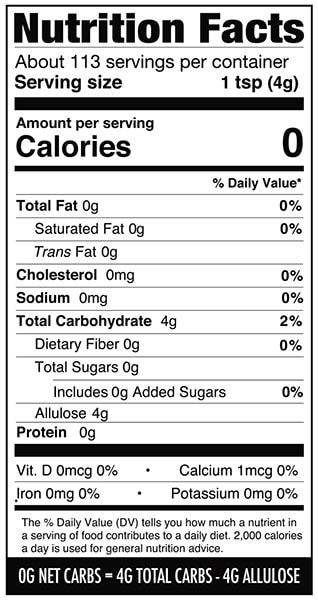
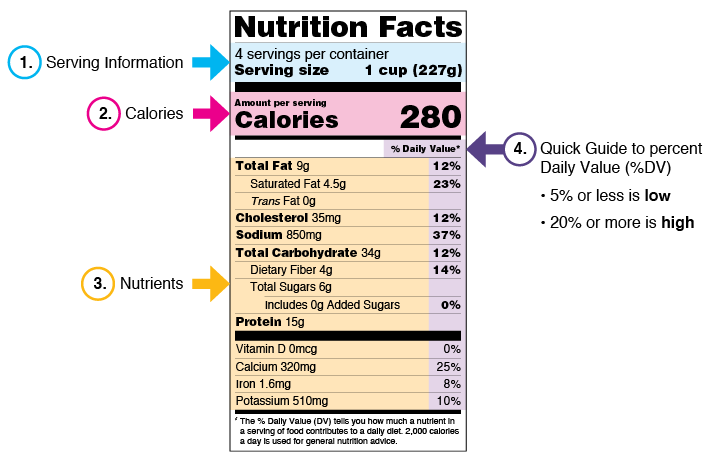
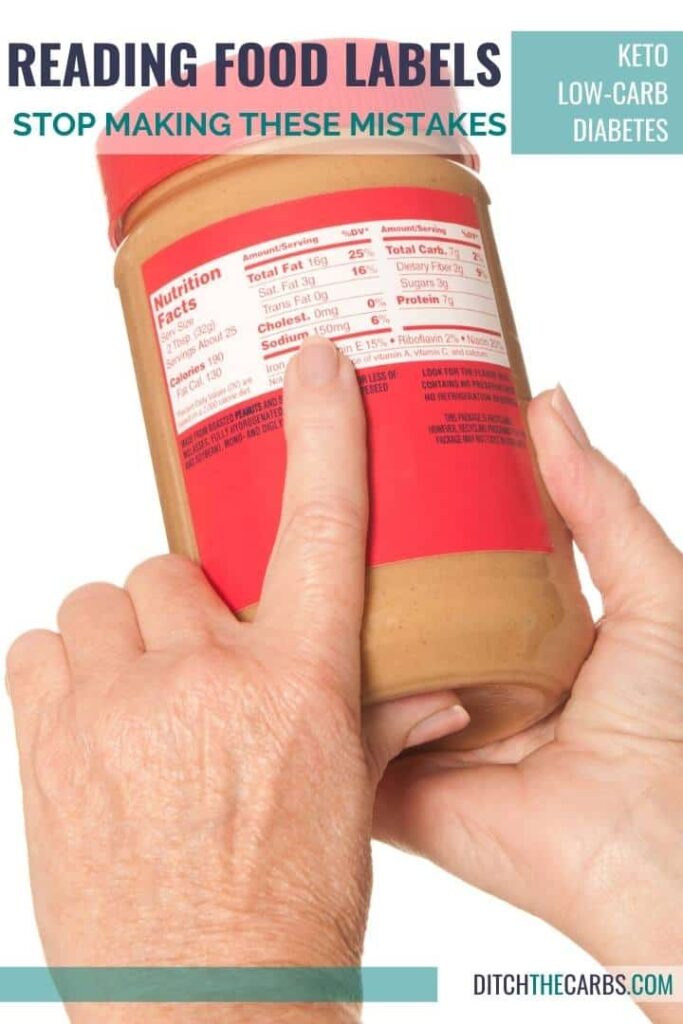

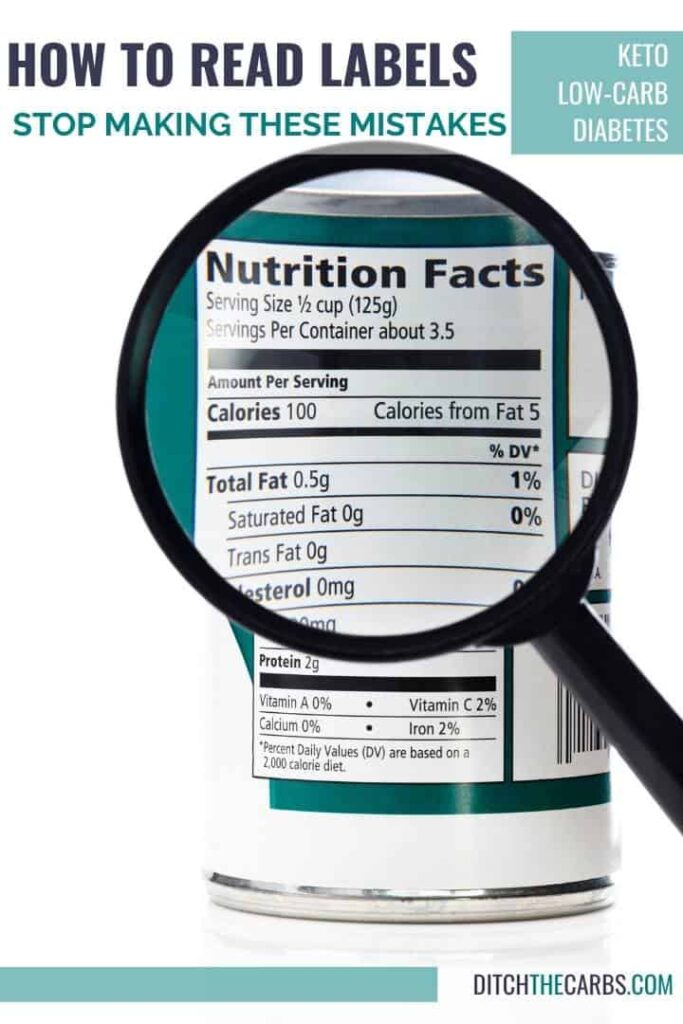

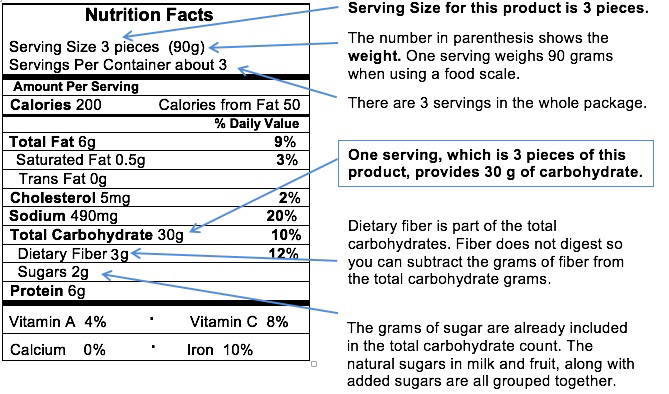

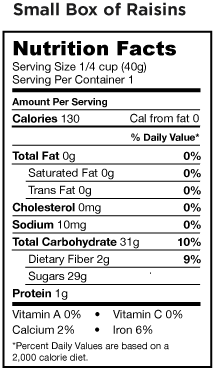







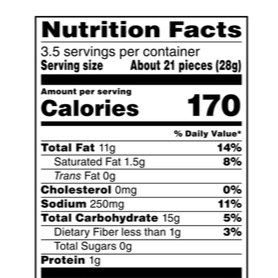









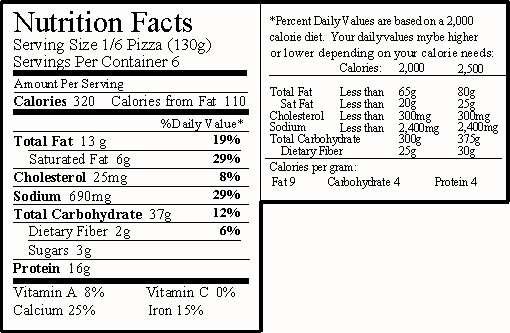


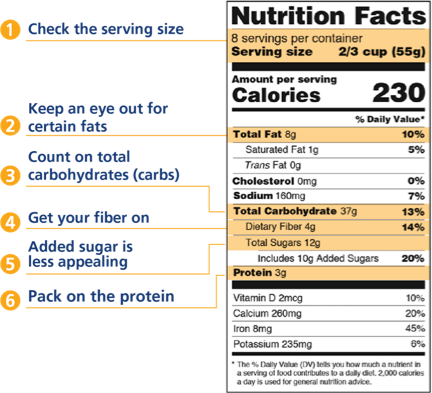




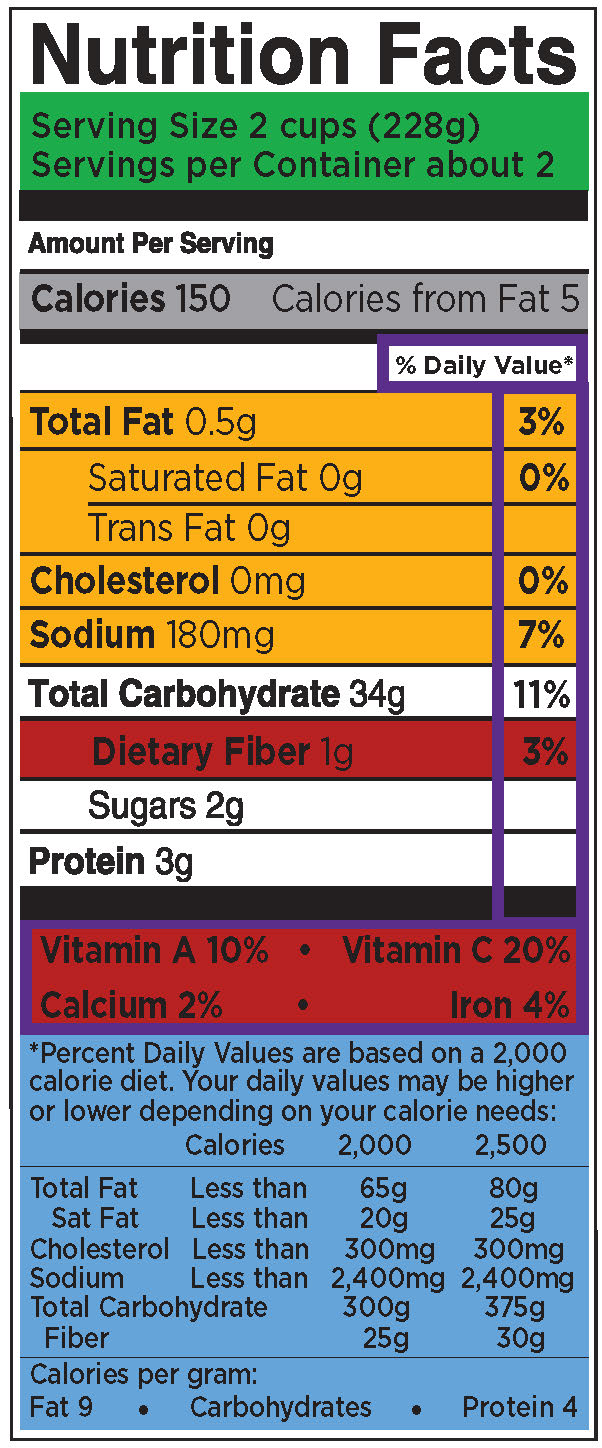


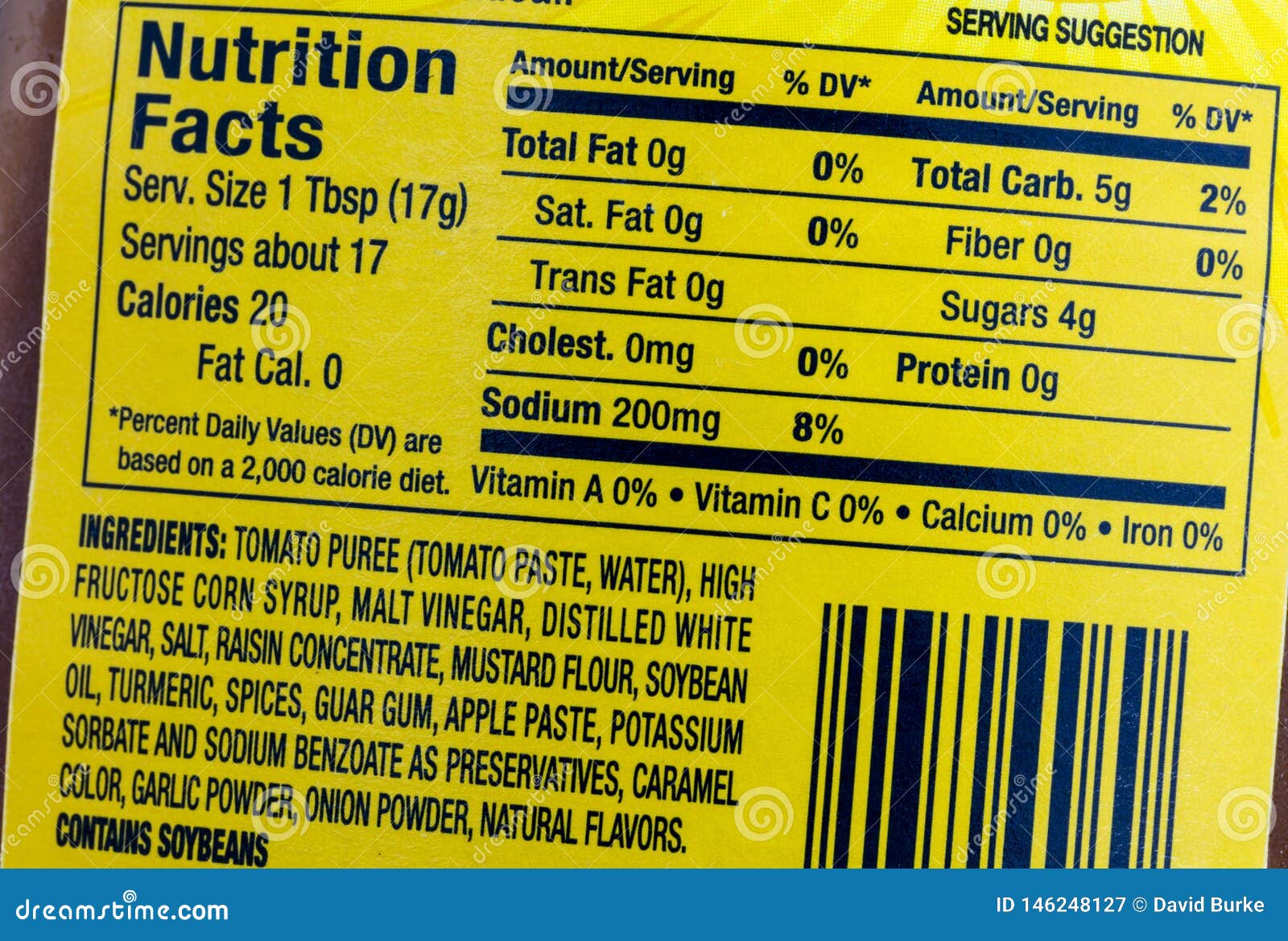
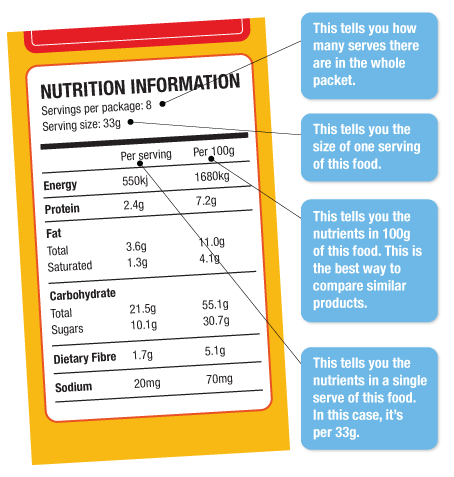
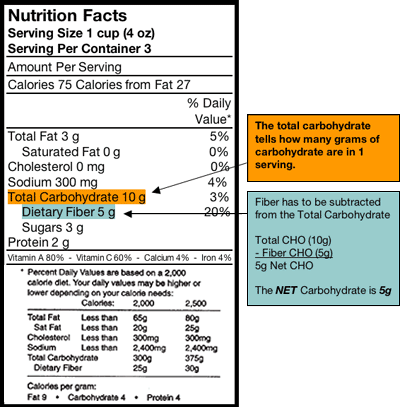
Post a Comment for "45 carbohydrates on food labels"